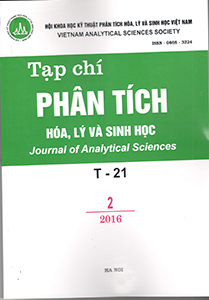PREDICTION OF HEAVY METAL ION ADSORPTION ABILITY FROM AQUEOUS SOLUTION OF PLANT LEAVES TO USE AS ADSORBENTS BY METHOD OF INFRARED SPECTROSCOPY FOURIER TRANSFORM (FTIR) ANALYSIS
Abstract
Five samples of fresh leaves from different plants including tea leaves (camelliasisensis), almond leaves (Terminalia), breast milk leaves (chrysophyllum cainito),hyacinth leaves (eichhornia) and leaves of wedelia chinensis (sphagneticola) werequalitative analyzed by FTIR spectra to determine function organic groups that canbind with heavy metal ions. The main purpose of our study is to predict theiradsorption ability for removal of heavy metal ions from aqueous solution. The resultsobtained shown that all leaves contain different function groups such as the hydroxylgroup (-OH) and carboxyl group (-COOH), which are the adsorption sites and havean important role in combination with heavy metal ions. To compare the absorption ofeach type of plant leaf, the maximum adsorption capacity, Qmax, for Cd2+ ions wasdetermined using the Langmuir adsorption isotherm model. Results showed that themaximum adsorption capacity of each leaf was different and depended on the natureand amount of functional groups of organic compounds which are available in theleaves.
Keywords: Plant leaf, FTIR spectra, Adsorption, Biosorbent, Heavy metals

